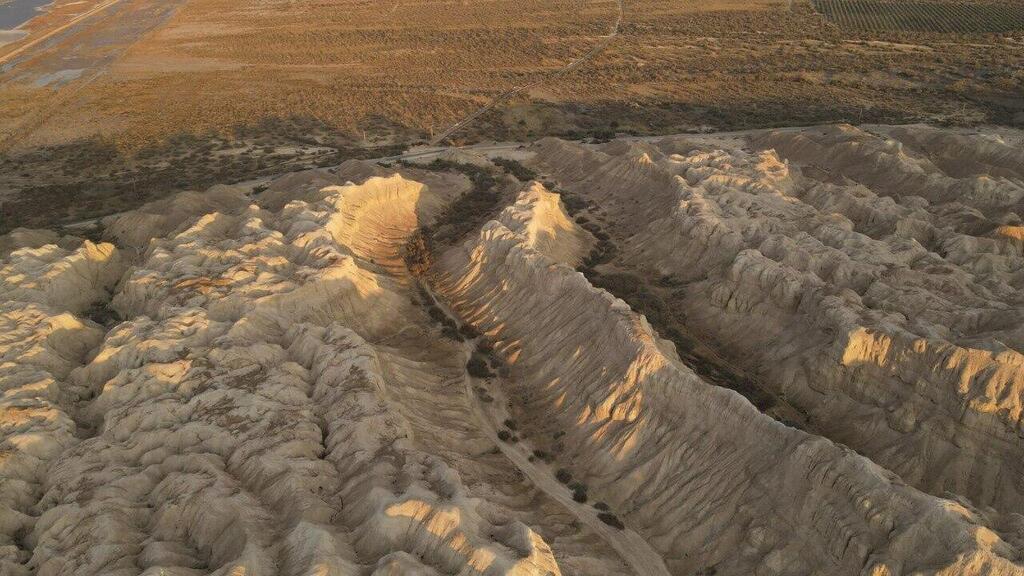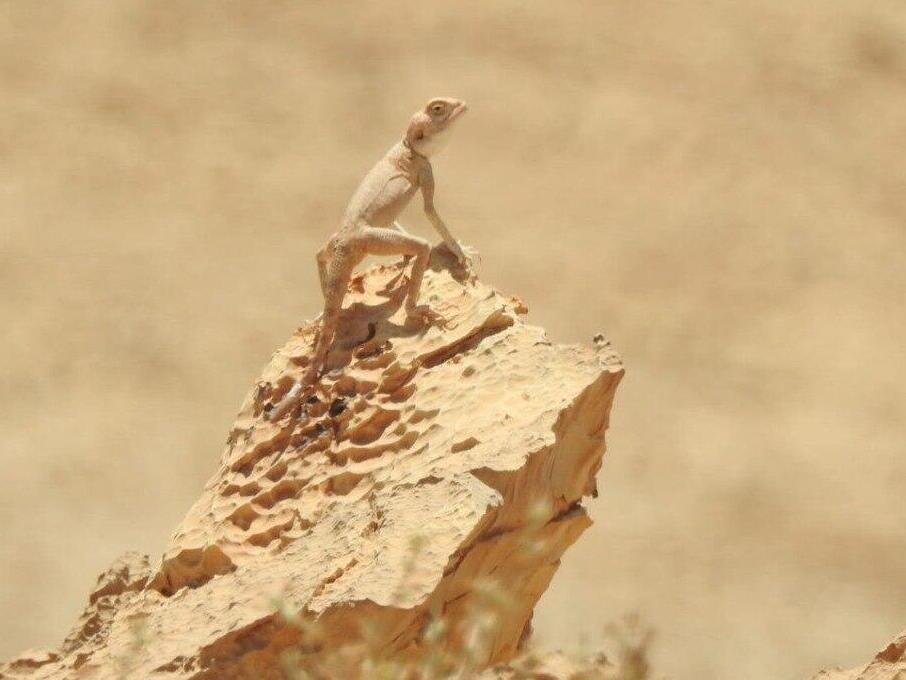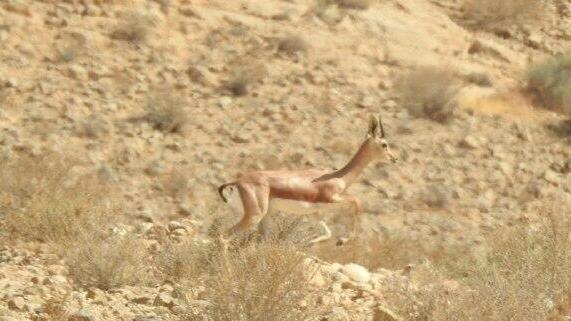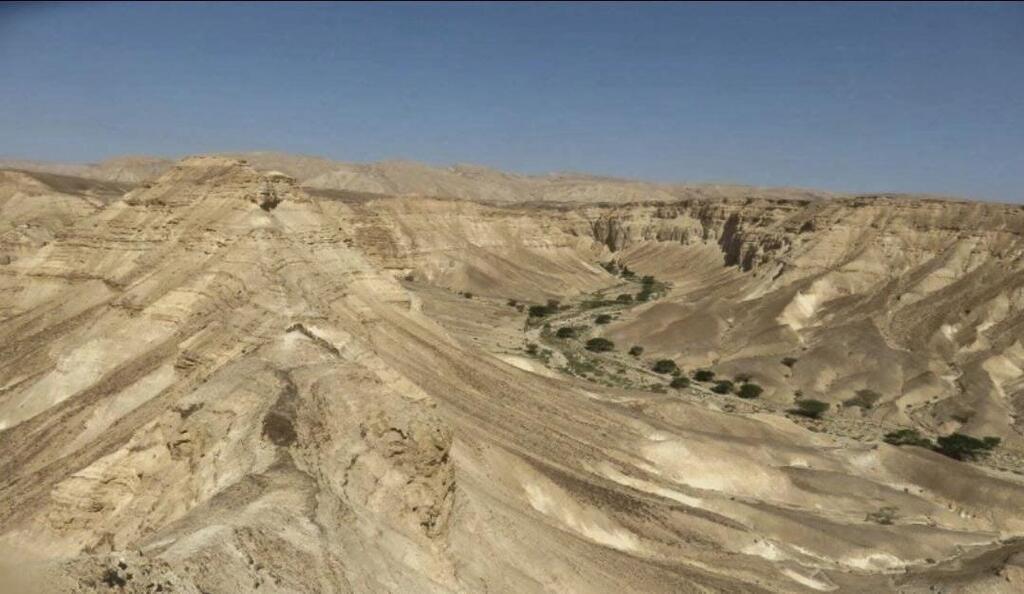It's not every day that a new nature reserve is introduced in Israel. Say hello to the Ramat Mazzar Nature Reserve where you will be able to observe rare species indigenous to Israel and breathtaking landscapes which are characteristic of Israel's Dead Sea region.
More stories:
The reserve serves as a habitat for a number of species found exclusively in Israel, including the Nubian ibex, the Dorcas gazelle, the Desert owl and the Blanford's fox. The unique reserve is characterized by a combination of different landscapes that are visible to its visitors, from wide streams to the shores of the Dead Sea.
The new reserve comprises a total area of about 90 thousand acres, and is located in the Tamar Regional Council. It borders the declared nature reserve of the Judean Desert to the south and west and the Sodom dry lake to the northeast.
4 View gallery


The reserve offers several hiking trails
(Photo: Arie Rozenberg, Israel Nature and Parks Authority)
The reserve, which was approved by the South District Planning and Construction Committee, has several hiking trails, including Tzafit River and Tamar River. The plan offers the regulation and expansion of a set of promenades, additional walking routes for hikers and cyclists, additional overnight parking, and information for visitors.
According to the planning documents, the entire region is home to populations of gray wolves and striped hyenas, which are the top predators in the desert's unique ecosystem. In order to exist in these arid regions, they require vast areas of land. In Amatsyahu Ecological Park you can find the unique wild boar population, and also penetrates the boundaries of the reserve.
4 View gallery


The reserve us the home of various species indigenous to Israel
(Photo: Arie Rozenberg, Israel Nature and Parks Authority)
These are small wild boars compared to those in the north of Israel constituting an isolated population. Asian green bee-eaters live in barrows in the soft walls. In Ramat Mazar, the western and higher part of the reserve, live a variety of small animals, including the hooded wheatear, a rare species whose conservation status has worsened in recent years.
4 View gallery


Baby gazelle in Ramat Mazzar
(Photo: Arie Rozenberg, Israel Nature and Parks Authority)
"Each addition of a new reserve allows us to better preserve and protect the values of nature and heritage and ensure their continued growth," says the Director of the Southern District of the Nature and Parks Authority, Gilad Gabay. "This area is characterized by unique animals, the responsibility for their continued existence as well as the public's ability to travel here to enjoy them and get to know them falls upon us and we welcome the decision to recognize this place as a nature reserve."
"An integral part of the work of the planning institutions, in addition to development, is the promotion of plans for nature reserves, such as the Ramat Mazzar plan," added Tomer Gotthelf, Southern District Planner in the Planning Administration. "This is to protect these areas in the long term for the benefit of the residents of Israel. Ramat Mazzar is rich in unique geological formations and landscapes which make it worthy of preservation."
Local residents opposed the establishment of the reserve, on the grounds that its location would restrict the area's future development. They also claimed that the plan covers a large area intended for agricultural development. The committee rejected these objections, noting that the area was not suitable for agriculture and would be a tourist attraction. Another claim by opponents was that the publicity involved in declaring the new reserve would ultimately cause damage to nature. The committee rejected this objection as well.



